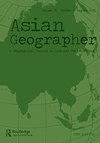Regulating post-disaster reconstruction planning in China: towards a resilience-based approach?
IF 2.2
Q2 GEOGRAPHY
引用次数: 8
Abstract
ABSTRACT There has been a growing tendency in recent years to use resilience theory when drawing up guidelines for formulating urban plans. However, restorative resilience analysis, which is the application of resilience thinking to introspect the planning system, has not yet been well addressed in existing academic inquiry. This article attempts to fill this gap by examining whether urban resilience features in China’s reconstruction planning regulation on different geographical levels, using carefully selected proxy resilience attributes. Reconstruction planning legislation and policies (RPLPs) are the focus of this study because they are perceived to play an important potential role in defining normative planning discourses and legitimizing planning practices. The article develops three major arguments. Firstly, while urban resilience does not yet feature explicitly on the agenda for reconstruction planning in China, specifications of RPLPs do convey certain attributes of urban resilience, but in a distorted form which reflects a failure to fully represent the evolutionary resilience perspective. Secondly, these RPLPs enable, at least rhetorically, a highly connected and efficient environment for post-disaster reconstruction efforts across levels and among institutions, especially through the adoption of a multilayered partner support program (PSP). Thirdly, based on the second argument, resilience is more usefully interpreted as a process rather than an outcome, as the performance of planning regulations would suggest. These arguments are elaborated through a case study of reconstruction planning in Wenchuan County following the 2008 Sichuan Earthquake.规范中国灾后重建规划:走向基于复原力的方法?
摘要近年来,在制定城市规划指南时,越来越多地使用弹性理论。然而,恢复性弹性分析,即应用弹性思维反思规划系统,在现有的学术研究中尚未得到很好的解决。本文试图通过使用精心选择的代理弹性属性,在不同地理层面上考察中国重建规划法规中的城市弹性特征,来填补这一空白。重建规划立法和政策(RPLP)是本研究的重点,因为它们被认为在定义规范的规划话语和使规划实践合法化方面发挥着重要的潜在作用。这篇文章提出了三个主要论点。首先,虽然城市韧性尚未明确列入中国重建规划的议程,但RPLP的规范确实传达了城市韧性的某些属性,但形式扭曲,反映了未能充分代表进化韧性的观点。其次,这些RPLP至少在口头上为各级和各机构的灾后重建工作提供了一个高度互联和高效的环境,特别是通过采用多层次的合作伙伴支持计划(PSP)。第三,根据第二个论点,正如规划条例的执行情况所表明的那样,弹性被更有效地解释为一个过程,而不是一个结果。这些论点是通过2008年四川地震后汶川县重建规划的案例研究来阐述的。
本文章由计算机程序翻译,如有差异,请以英文原文为准。
求助全文
约1分钟内获得全文
求助全文
来源期刊

Asian Geographer
GEOGRAPHY-
CiteScore
3.30
自引率
0.00%
发文量
7
期刊介绍:
Asian Geographer disseminates knowledge about geographical problems and issues focusing on Asia and the Pacific Rim. Papers dealing with other regions should have a linkage to Asia and the Pacific Rim. Original and timely articles dealing with any field of physical or human geographical inquiries and methodologies will be considered for publication. We welcome, for example, submissions on people-environment interactions, urban and regional development, transport and large infrastructure, migration, natural disasters and their management, environment and energy issues. While the focus of the journal is placed on original research articles, review papers as well as viewpoints and research notes under the category of “Asian Geography in Brief” are also considered. Review papers should critically and constructively analyse the current state of understanding on geographical and planning topics in Asia. The ‘Asian Geography in Brief’ section welcomes submissions of applied geographical and planning research about Asia. The section aims to showcase (1) the diverse geography and planning of Asia; and (2) the diverse geographical and planning research about Asia. The journal will also publish special issues on particular themes or areas. Book reviews can be included from time to time.
 求助内容:
求助内容: 应助结果提醒方式:
应助结果提醒方式:


